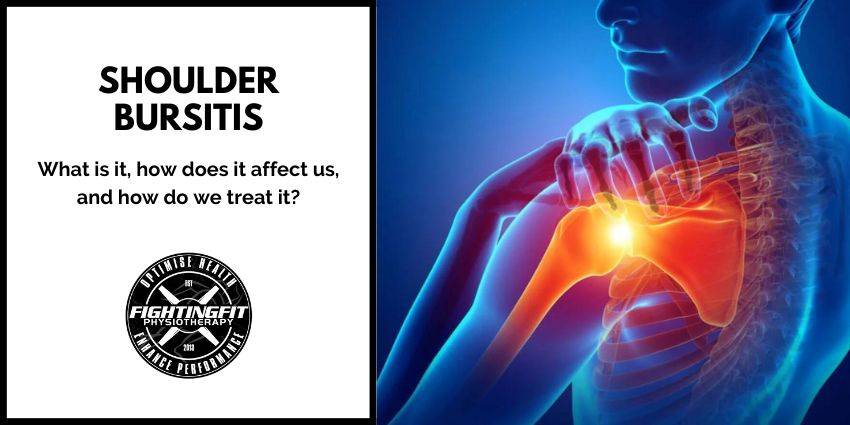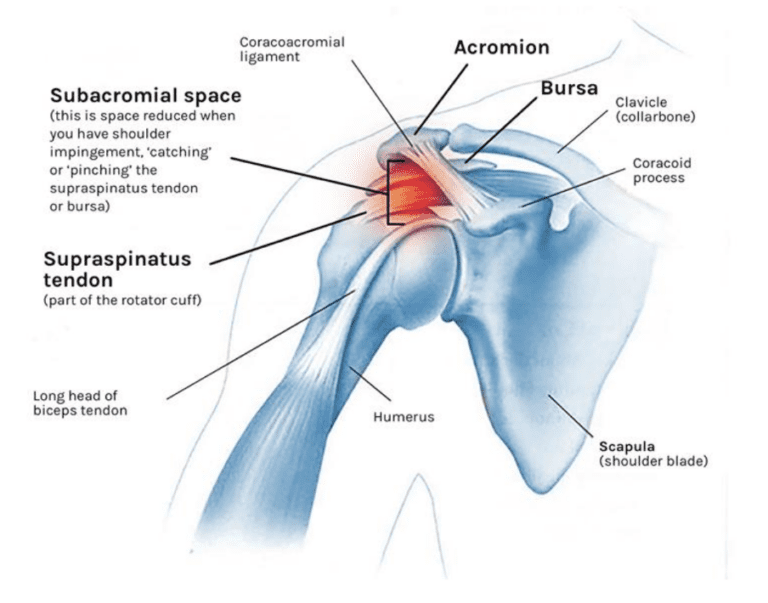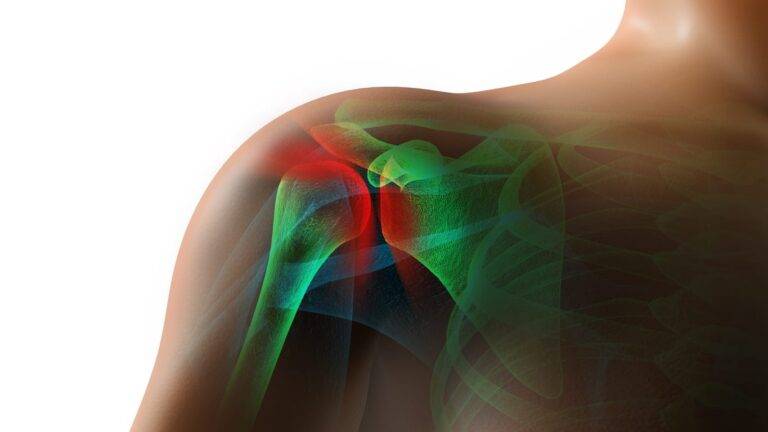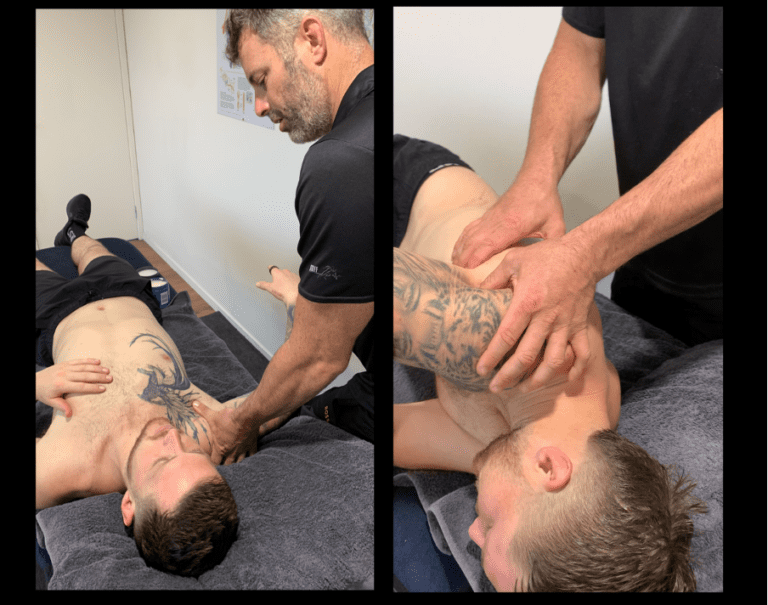Shoulder Bursitis
Bursitis: What is it, how does it affect us, and how do we treat it?

Shoulder bursitis is a common condition that affects the small fluid-filled sacs called bursae located in the shoulder joint.
Bursitis can occur in any joint that has a bursa, but shoulder bursitis is particularly common due to the complex and frequently used nature of the shoulder joint.
In this blog post, we will explore the signs and symptoms of shoulder bursitis, its causes, as well as treatments and interventions from an expert physiotherapist’s perspective that will help shoulder pain sufferers.

Signs and Symptoms
The most common symptom of shoulder bursitis is pain in, or around the shoulder joint.
The pain can vary in intensity and may worsen with certain movements. Patients with shoulder bursitis typically report pain that is localised to the front and outside (lateral) part of the shoulder – with pain, accompanied stiffness, tenderness and soreness experienced all the way into the hand.
Most of the time, patients with shoulder pain will experience difficulty lifting or moving their arm, especially when trying to reach above the shoulder or behind the back.

What are the causes?
Shoulder bursitis can occur due to several causes. Overuse or repetitive motions of the shoulder joint, such as in athletes or workers who perform repetitive overhead activities.
Other causes of shoulder bursitis include direct trauma or injury to the shoulder, such as falling over, waking after sleeping on it or other underlying conditions such as rheumatoid arthritis, gout, or diabetes.
Additionally, certain anatomical factors such as impingement or rotator cuff tears can also contribute to shoulder bursitis.

Treatments and Interventions
Physiotherapy is the recommended treatment for shoulder bursitis.
The goal of physiotherapy is to reduce pain and inflammation, improve shoulder mobility, and prevent recurrence of the condition.
According to a study by Marra et al. (2016), physiotherapy interventions for shoulder bursitis may include manual therapy, such as soft tissue mobilisation and joint mobilisation and exercise therapy.
The study also found that patients who received physiotherapy interventions showed significant improvements in shoulder function and pain reduction compared to those who did not receive physiotherapy.
In some cases, medical interventions such as corticosteroid injections or surgery may be required. However, these interventions are typically reserved for more severe cases of shoulder bursitis that do not respond to conservative treatments such as physiotherapy.
According to Gofeld and Doherty (2018), corticosteroid injections can provide immediate pain relief by reducing inflammation in the bursa. However, there is some evidence that repeated corticosteroid injections may lead to tendon degeneration and increased risk of future injury.
Surgery, on the other hand, may be necessary to repair any underlying anatomical issues or in cases where conservative treatments have been unsuccessful.

So what does this all mean?
Shoulder bursitis is a common condition that can cause significant pain and discomfort.
Physiotherapy is an effective treatment option for shoulder bursitis, which includes a range of interventions such as manual therapy and exercise therapy.
Early recognition and intervention are critical for optimal outcomes in shoulder bursitis.
If you suspect that you may have shoulder bursitis, or you are struggling with pain or reduced function of your shoulder, don’t hesitate to get in touch with the team at Fighting Fit Physio and book an initial consultation.
Dean Phelps is the founding owner and senior physiotherapist at Fighting Fit Physiotherapy. He has a special interest in the highest physiotherapy care which focuses on progressive, results based treatments that ensures patients meet their goals, move optimally and enhance their health.
Dean Phelps is the founding owner and senior physiotherapist at Fighting Fit Physiotherapy. He has a special interest in the highest physiotherapy care which focuses on progressive, results based treatments that ensures patients meet their goals, move optimally and enhance their health.

